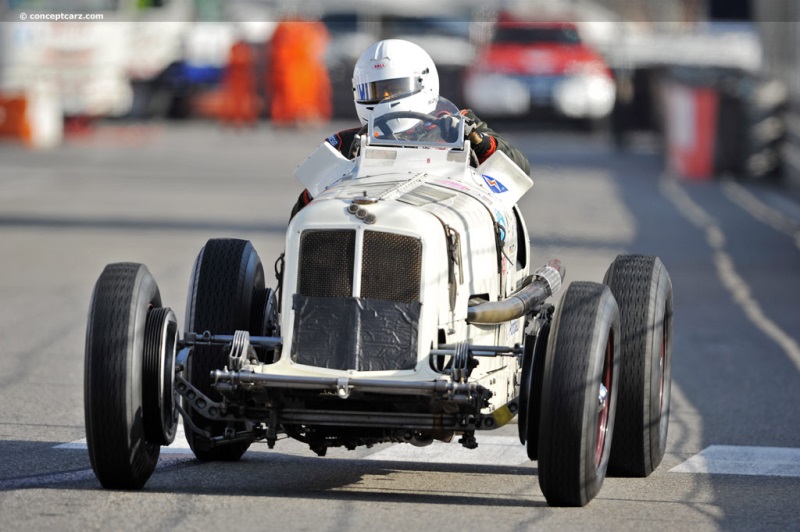Humphrey Cook, Raymond Mays, and Peter Berthon founded ERA in November of 1933 in Bourne, Lincolnshire. Their goal was to bring honor, prestige, and victory back to the British motor-racing scene. At this point in history, many of the major Continental European races were dominated by teams from other countries, primarily by French and Italian teams. Apart from Bentley's success at LeMans in the 1920s, British Motor racing had few podium finishes. Raymond Mays, a wealthy privateer racer, spearheaded the effort. His racing resume included success with Invictas and racing a Riley Special during the 1933 season. The name of the company, ERA, was short for English Racing Automobiles. Although the cars they would produce would be made to customer's specifications, they would primarily design and build cars for themselves.
MonopostoReid Railton was a British automotive engineer and designer. During the late 1910s, he had worked with Leyland Motors where he was instrumental in creating the Leyland Eight luxury car. He left Leyland in 1922 and established the Arab Motor Company where he was chief designer. Roughly twelve cars were built before the Arab factory was closed. In the late 1920s, he worked for Thomas & Taylor as their Technical Director. One of the projects included John Cobb's 1933 Napier Railton car which captured the Outer Circuit record in 1933. Railton also worked on Sir Malcolm Campbell's Blue Bird Land Speed Record cars of the early 1930s. Based on his accomplishments and his talents, Reid Railton was selected by the ERA team to design their new car for the Voiturette class. The voiturette during this period often referred to a class of smaller racing cars under the main Grand Prix formula with displacement sizes that ranged from 750cc to 1500cc. Although rule changes over the years changed, and thus the Voiturette regulations followed those changes, the term generally represented smaller cars with displacements under 1500cc (sometimes supercharged). The engine selected was the Riley straight-six, as Mays had experience with it during the 1933 season. Railton also had experience with Riley's as well, having worked J.G. Parry-Thomas in 1927 on the Riley Brooklands (initially called the '9' Speed Model). The Brooklands, along with the Ulster Imp, MPH, and Sprite would be among the most successful works and privateer racing cars of the late 1920s and early 1930s. At the 1934 LeMans, Rileys captured 2nd, 3rd, 5th, 6th and 12th, winning the Rudge-Whitworth Cup, the Team Prize, two class awards, and the Ladies' Prize.
MonopostoThe Riley six-cylinder engine had camshafts located on both sides of the engine, with one operating the intake valves, and the other for the exhaust valves. The early cars were powered by a 1.1- and 1.5-liter displacement sizes. With the help of a Roots-Type supercharger, the 1.5-liter version produced nearly 170 horsepower. The engines were backed by a Wilson pre-selector gearbox (also known as a self-changing gearbox), a popular gearbox at the time. It was a type of manual gearbox where the gear is 'pre-selected', then a separate foot pedal control was used to engage the gear in a single operation, removing the need to work a manual clutch. Although a preselector gearbox is not an automatic gearbox, they do have many internal similarities. The advantages of using the preselector gearbox were that it allowed faster shifting, with only a single operation required, and they were able to handle more engine power, with a lighter mechanism.The engine and transmission were installed in a ladder-frame chassis designed by Railton, having live axles with semi-elliptical leaf springs and Hartford friction shock absorbers. Drum brakes provided the stopping power. Four ERA A-Types were built, R1A through R4A, and raced by the works team during the 1934 and 1935 seasons. Privateers received the B-Type chassis with a more reliable engine. 13 examples of the ERA B-Type were built, with chassis numbers R1B through R14B (the number 13 was not used due to superstition). 
MonopostoAmong the ERA privateer's racers was Dick Seamon, who would later go on to drive for the Mercedes-Benz team just prior to the outbreak of World War II. Seaman and the ERA were among the most successful in the voiturette class. Other drivers of the ERA included two Siamese princes, Chula Chakrabongse and Bira Birabongse, who would come to establish The White Mouse Garage. The team's driver was Prince Bira who quickly became a very successful driver in voiturettes, and would even continue his racing career into the first half-decade of the Formula One World Championship. Prince Bira had three examples and would earn more than 20 British and International victories and a vast number of top finishes.May established a number of hillclimbing records while at the wheel of R1A and many of the subsequent models.
by Daniel Vaughan | Feb 2020
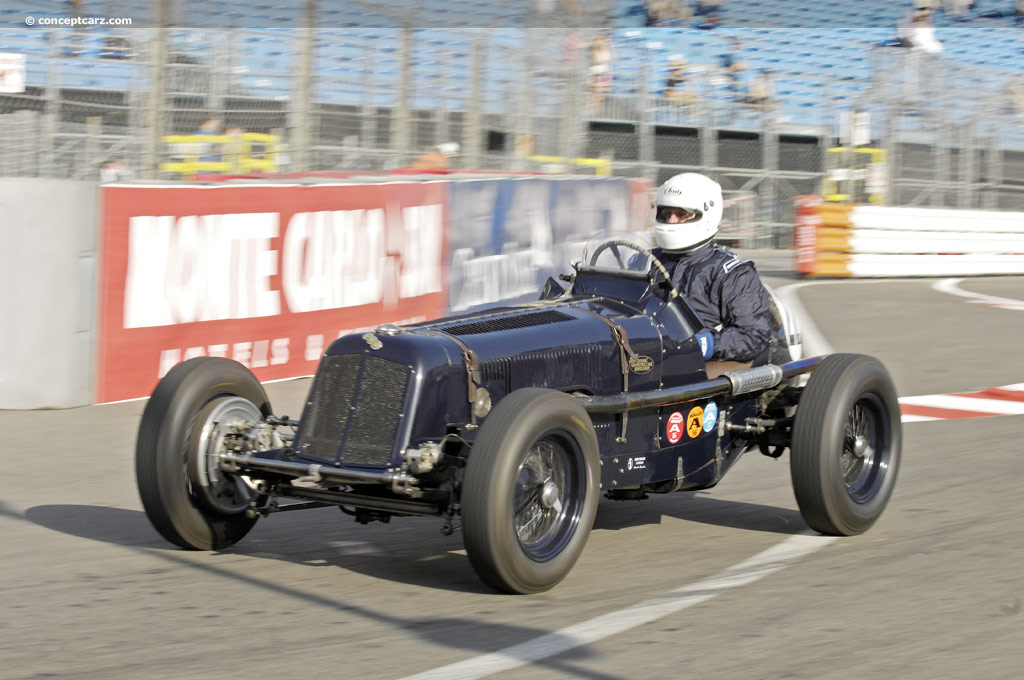
Monoposto
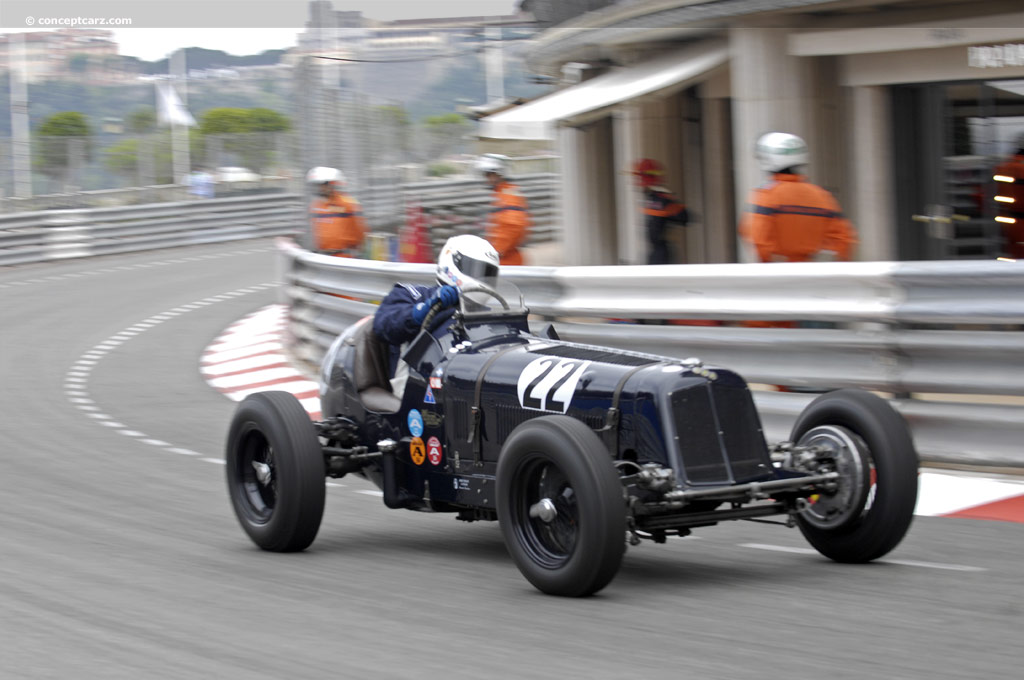
Monoposto

Monoposto
by Daniel Vaughan | Feb 2020
Many a young boy has grown up with the dream of being a racing champion. For many, that dream begins to fade with age. For others…well, they just never really grow up. In the early days of gas-powered automobiles, or 'motorized carriages', racing thoroughbred automobiles seemed almost like a dream too. 
MonopostoThomas Cuthbert Harrison, or 'Cuth' or T.C., as he would most commonly be known, was born in July 1906, in the early days of the automobile. This rather new contraption attracted T.C.'s interest, and in 1931 Cuth opened a small vehicle repair business in Sheffield, on Abbeydale Road. Soon, this man of vision and congeniality built a thriving business and had a wonderful reputation.Only after World War II did Harrison begin to really get into motor racing, particularly grand prix racing. Prior to the war, grand prix racing was very popular and hotly contested by some of the greatest automobile manufacturers in the world at that time. During the golden era of racing there were big local races, even championships. Given motor racing's increasing popularity and the increasing number of tracks and races that sprang up during this period, it wasn't too surprising that T.C. would have been lured into the racing world in an effort to further foster his fledgling vehicle repair business, even other endeavors. Harrison began to race a few grand prix here and there throughout the late 1940s. Of course, by 1946, Harrison would have already been 40 years old, in a sport where injury and death were a common occurrence. Priorities definitely had to be in order, and Harrison's head was never too far away. 
MonopostoDespite being perhaps thoughtful of the future and what autoracing could do for his business, Harrison showed some real talent behind the wheel. At the Grand Prix de Reims in 1947, T.C. co-drove and ERA B with Bob Gerard and came home in third position only 3 laps down from the race winner Christian Kautz in a Maserati 4CL. Then, in 1949, Harrison drove to a 6th place finish in the Italian Grand Prix at Monza some five laps behind the winner Alberto Ascari. This was an impressive result for T.C. given the fact he started the race from 15th on the grid. There were many different races and championships that existed prior to 1950, but not necessarily one formalized world championship series. Once this organization came into place, many racers, who had been competing in many of the other grand prix races, were there at Formula One's beginnings. Cuth was one of them. The first championship registered event was the British Grand Prix at Silverstone in May of 1950. Harrison entered his own private ERA B type chassis (see ERA article). Qualifying was less than spectacular as T.C. powered his ERA to a 15th starting spot on the grid, some 6+ seconds behind the pole-sitter Giuseppe Farina.
MonopostoDespite a rather unspectacular qualifying effort, Harrison impressed during the race. Considering those who finished behind him, Harrison stayed in relative contact with race winner Farina finishing 3 laps behind in 7th place.A week later, Cuth made his way to Monte Carlo for the Monaco Grand Prix. Once again, Harrison brought his ERA B chassis and qualified one spot better than Silverstone, 14th, some 11+ seconds behind pole-sitter Juan Manuel Fangio. Harrison's Monaco Grand Prix was nothing to really remember though as his race did not even last one lap. There was a huge accident on the first lap that included some nine cars, including Harrison's ERA. That was it. Not even one lap completed.Harrison sat out the remainder of the Formula One events until it rolled into Monza for the Italian Grand Prix. However, Harrison did not remain inactive. T.C. would compete in the Ulster Trophy race in Dundrod in August. Using an ERA C-Type chassis, that used to belong to Reg Parnell, Harrison qualified for the race in the 3rd position. Despite the fact there were only 9 starters, and only 5 finishers, Harrison ran a consistent and solid race for the 15 laps and came home in 3rd place overall. 
MonopostoGiven this good result at Dundrod, and given his rather good result at Monza the previous year, Harrison made the journey to compete in the Italian Grand Prix in September. T.C. was amidst a sea of driver entries for the final race of Formula One's first season. Driving his ERA, Cuth was only able to manage a 21st starting spot, some almost 20 seconds behind pole-sitter Juan Manuel Fangio and his Alfa Romeo. Obviously, Harrison's ERA lacked the power that the thirsty supercharged Alfa Romeos had in spades.The 1950 Italian Grand Prix was one of high attrition. Out of the 28 starters, only 7 finished the race, and Harrison was not one of them. Some 29 laps from the end, T.C.'s radiator let go and brought his Italian Grand Prix to an end. Despite this frustration, Harrison was one of the last runners and ended up classified in the 9th finishing position.The Italian Grand Prix mark the end of Formula One' first season of existence. The Italian Grand Prix also marked the last race of Harrison's Formula One career. But, Harrison was not done with racing all-together.
MonopostoAfter leaving the grand prix scene for the most part, T.C. kept up racing. Harrison would compete in many sprint trials. In 1952, Harrison was the RAC Trials champion at the age of 46. Harrison never really seemed to have any misconceptions about his racing career. Soon Harrison stepped away from racing but started a highly successful car dealership that is still in existence today.Though never a champion, T.C. Harrison lived the dream of being a grand prix racer. However, he used the experience, the title, the prestige to live out his true calling—owning a car dealership that took care of customers so well that they never had a need to go anywhere else. Harrison fulfilled this calling up until his death in January 1981. Wikipedia contributors. 'Cuth Harrison.' Wikipedia, The Free Encyclopedia. Wikipedia, The Free Encyclopedia, 1 Mar. 2010. Web. 13 Apr. 2010.
Monoposto
Chassis #: R9B
View info and historyBrown, Allen. ''Ulster Trophy.' Old Racing Cars. Web. 13 Apr. 2010.T.C. Harrison. 'Corporate Company History.' T.C. Harrison Group. Web. 13 Apr. 2010By Jeremy McMullen

Monoposto

Monoposto

Monoposto
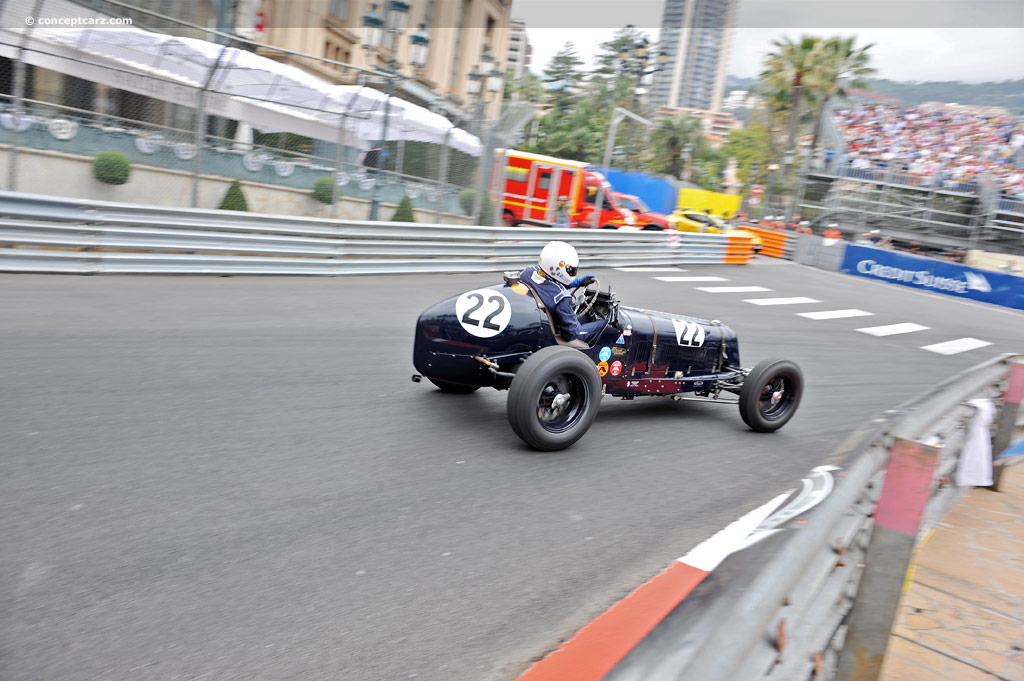
Monoposto
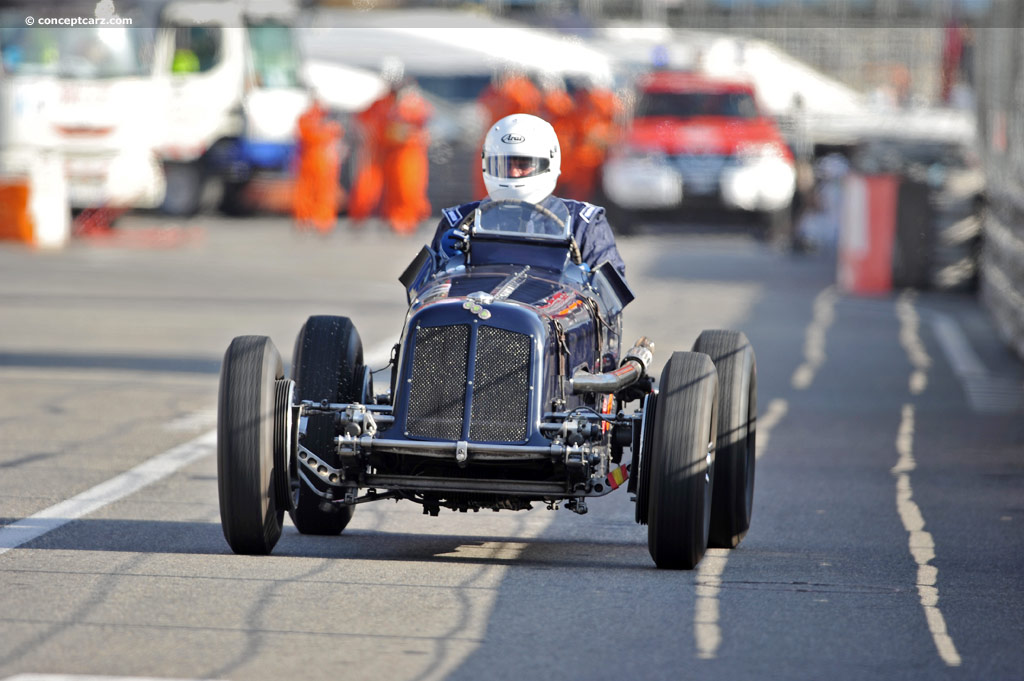
Monoposto
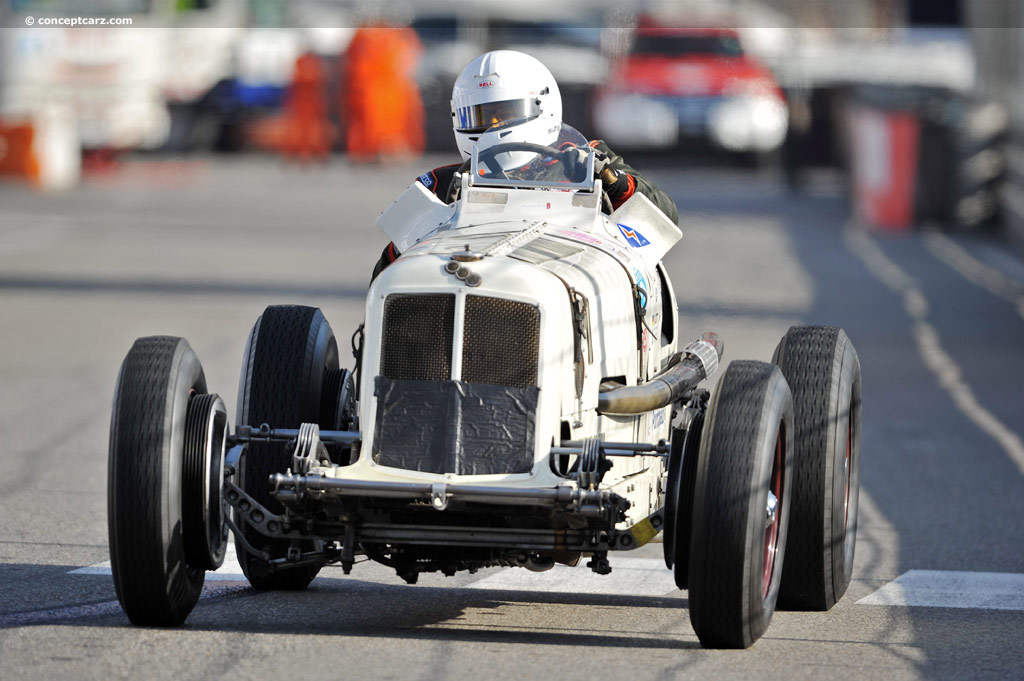
Monoposto
Chassis #: R9B
View info and history
Today, it costs millions to develop a driver to be able to race at the highest levels. In the fledgling racing circuits, of the early days of motor racing, it was almost a chivalrous act for those with the means to go out and brave death behind the wheel of a modern chariot. For those with the talent, but without perhaps all of the means, it took the right connections to find a competitive ride. Obviously, there was wide range of talent; from those who do because they can and those who do because another believes in their ability. Peter Walker was one of those who had the talent to not merely compete, but was a threat to win.
Monoposto Walker was born in Leeds, Yorkshire in 1912. During his twenties, Walker really started showing interest and promise in circuit racing and hillclimbing. Peter's needed connection to make his promise come to fruition was found in Peter Whitehead. Throughout the period before the second world war, Walker could be found racing one of Whitehead's ERAs. His aggressive, sliding style made him a crowd favorite and gained him a certain bit of notoriety. Although competitive before the war, Walker's aggressive style and experience helped him become even more successful in the late forties. In fact, he was one of the few really able to get the ERA E-type to perform and prove successful (see ERA article). 1948 was one of Walker's best years where he was able to put together some impressive performances both in hillclimbing races but also in grand prix racing. One of those races Peter competed in during 1948 was the British Grand Prix at Silverstone. This was one of the first races at the former bomber base and was considered the first-ever British Grand Prix. An almost permanent fixture today, the grand prix at Silverstone, initially, was supposed to be a one-off kind of event. The air ministry only allowed the event to be held at the base for that one year. 
Monoposto During this race, Peter was one of many who came to the race driving an ERA. However, Walker's drama didn't just come out on the track. In fact, Peter's drama was really trying to get to the track. Peter entered the race technically driving an ERA E-type chassis. Unfortunately, ERA was unable to deliver the chassis in time for the race. This meant Walker ended up starting the event in his own B-type ERA. Peter started the race from the 8th position. This looked good but was really a gift handed to many of the entrants by Maserati's factory team failing to show up in time for qualifying. However, starting 8th was respectable given the fact Peter was driving a car more than a decade old, and that he beat out many other entrants including such names as Salvadori, Comotti and Rosier. During the race, Walker survived the massive attrition to finish in 11th place, some 12 laps behind the winner Villoresi. Villoresi's young teammate Ascari came in second and Bob Gerard, in an ERA, driving a brilliant race in an outclassed car, finished third.
Monoposto In Formula One's first season, Peter was there for the very first race at Silverstone. In fact, Peter was one of the first to be entered for the race. Walker entered his own ERA E-type for the race. Peter demonstrated his ability and out-right speed when he was able to qualify his E-type 10th. Peter beat out the likes of Chiron, Gerard, Etancelin, Murray and Claes. Despite being attended by royalty, the Brit, Walker, would not really enjoy much of the 1950 British Grand Prix however. After only two laps, Peter turned the driving duties over to fellow Brit Tony Rolt. Unfortunately, the pace the car showed during qualifying wasn't matched by endurance. Both Peter Walker's and Tony Rolt's British Grand Prix came to an early end on lap five due to gearbox problems. Peter Walker's inaugural Formula One season came to an end after only an accumulation of five laps, as Walker did not contest another event on the Formula One calendar. So Peter Walker's team ended the first season of Formula One having qualified a personal best 10th, but only having completed five laps, and personally, Walker had only contested a total of two laps in Formula One. This sad fact was not to be what Walker is remembered for, however. Although considered 'erratic' by some, there was no denying Peter's ability. Though appearing as a footnote for Formula One's first season, in sports car racing Peter had the connections to not only compete but to go on to win. Pairing with his old connection Peter Whitehead in 1951, Walker would go on to achieve his greatest fame—winning the 24 hours of Le Mans. 
Monoposto
Wikipedia contributors. 'Peter Walker (racing driver).' Wikipedia, The Free Encyclopedia. Wikipedia, The Free Encyclopedia, 4 Mar. 2010. Web. 22 Mar. 2010.'Peter Walker.' Stats.crash.net, Crash.net,
22 March 2010By Jeremy McMullen

Monoposto

Monoposto

Monoposto

Monoposto
Wikipedia contributors. 'Peter Walker (racing driver).' Wikipedia, The Free Encyclopedia. Wikipedia, The Free Encyclopedia, 4 Mar. 2010. Web. 22 Mar. 2010.'Peter Walker.' Stats.crash.net, Crash.net,
22 March 2010By Jeremy McMullen
Related Reading : Era B-Type History
It had been since 1923 and the French Grand Prix when a British car last had seen victory in a grand prix. Armed with the desire to bring an end to the drought, Humphrey Cook, Raymond Mays, and Peter Berthon bought a lot in 1933 behind the home of Mays and established English Racing Automobiles (ERA). In 1933 governments began investing in the likes of Alfa Romeo and other teams making the costs of....
Continue Reading >>
Continue Reading >>
1936 Era B Type Vehicle Profiles
Recent Vehicle Additions
Related Automotive News
The Stuff of Legend: Prince Bira, The Mighty Mouse of Siam
In the film Tombstone there is an exchange of dialogue between Wyatt Earp and Doc Holliday. The subject is life. Earp says, All I ever wanted was to live a normal life. To which Holliday responds, There is no normal life, theres just life......
R.H.H. Parnell: 1959 Formula One Season
In 1951, Reg Parnell pulled off a huge upset surviving an absolute deluge of rain that flooded the Silverstone circuit during the BRDC International Trophy race. Parnell would manage to keep his Ferrari 375 under control long enough to be declared the...

An Era of Perspective
Everyone loves a champion. At least that is the saying. But it isnt necessarily true. Instead, everyone loves their champion. When another proves to be equal or stronger, then all reason slips through the window when judging skill.
The lamentations...

1954 24 Hours of Le Mans: A French Bull Runs to Victory at Le Mans
Everything needs to be right amongst drivers competing for victory in the 24 Hours of Le Mans. Not only do they need to share the car over the course of a whole day but their driving styles must compliment each other. In the case of the 1954 24 Hours...

1951 British Grand Prix: Tapped for a Special Moment in History
The lead and the victory were firmly within his grasp, but would the moment be taken away from him He had been in a similar situation before and then there would be a tap on the shoulder and he was forced to give up what he had fought so hard to earn....


















